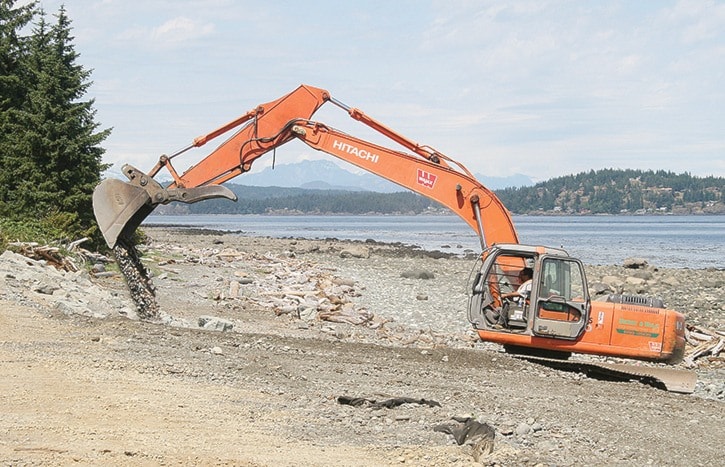No, the city isn’t building another boat ramp near the 50th Parallel sign.
Rather, the 100-metre strip is being reshaped to return the beach to a more natural slope that helps protect the Seawalk and underground services from storm damage, and provides better public access to the beach.
“Preserving these areas are critical,” says Ross Milnthorp, the city’s general manager of parks, recreation and culture. “We know we’re going to see more storms and more severe storms.”
The stretch of beach, along the Island Highway just north of the parallel marker, is the just the latest to receive a natural makeover. Beach sloping projects have already taken place near Rockland Road and the Island Highway, and at Rotary, Dick Murphy and Ellis parks.
“The areas we’ve done have been very successful,” says Milnthorp.
The city has a priority list of beaches to be reshaped and is currently doing about one a year. The list is updated regularly and priority areas may shift depending on storm damages.
Money for the projects doesn’t come from the municipal tax coffer, but from the Community Works Fund (funded through the federal gas tax). The latest project is costing $45,000-$50,000 and is expected to be finished today.
The timing was also good because work had just been completed in the same area to install new underground services. Milnthorp says the Seawalk section will be repaved by the end of the July and the riparian zone replanted this fall.
The difficulty with this section of beach is there isn’t a lot of room to work with between the high water mark and the Seawalk. As a result, it won’t be as gentle a slope as some of the other beaches, but it’s expected to help minimize storm damage as well as providing the public with easier access to the beach.
The work involved burying 240 cubic yards of rip-rap to provide a stable base and then covering it in 720 cubic metres of beach gravel reclaimed from the Ken Forde boat ramp. The driftwood was also saved to be scattered back on the beach.
